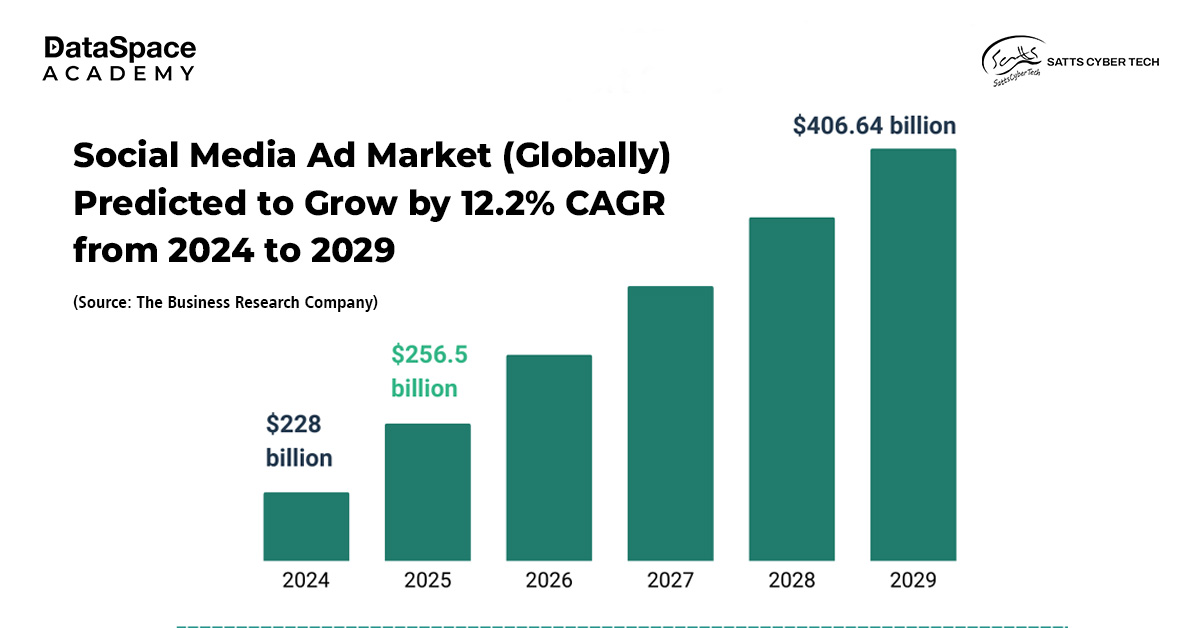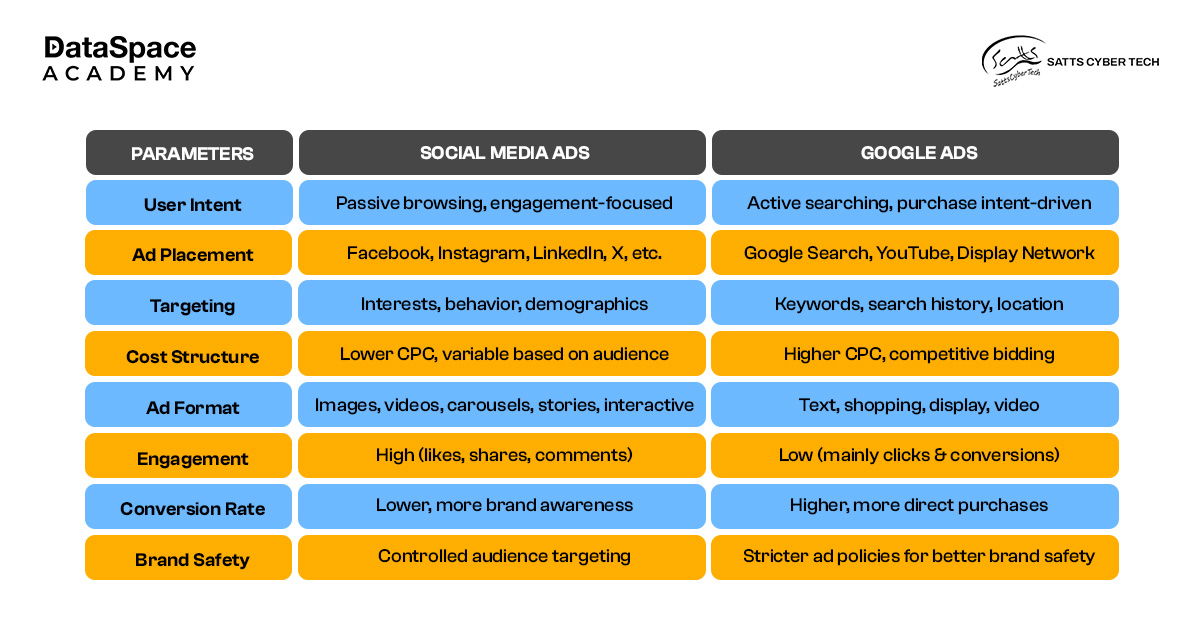In today’s digital marketing landscape, businesses rely heavily on
social media ads, Google Ads, and Facebook Ads to reach their target audience. But how to judge which works best to give your brand that hike? While
Google Ads help you understand search intent,
social media ads focus on engagement and brand awareness. Choosing the right platform depends on your goals, audience, and budget.
Let’s break down their differences and see which one fits your marketing strategy best.
 Social network ads
Social network ads are paid advertisements displayed on platforms like
Facebook, Instagram, LinkedIn, X (formerly Twitter), and Quora. These ads use user demographics, interests, and behaviours to target potential customers effectively.
Google Ads is a pay-per-click (PPC) advertising platform that places ads on Google Search, YouTube, and other partner sites. These ads appear when users search for specific keywords, making them highly intent-driven. The platform was formerly known as
ad words Google.

While both
social media ads and
Google Ads help businesses reach their target audience, they work differently in terms of user intent, ad formats, targeting, and cost structure. Here’s how they compare:
Both advertising strategies have their strengths, and the best choice depends on your marketing goals. Whether you’re aiming for brand awareness through
social media ads or direct conversions via
Google Ads, a balanced strategy often delivers the best results.
Choosing between
social media ads and Google Ads depends on what outcome you seek out of your business. If you’re looking for brand awareness and engagement,
Facebook and Instagram Ads might be your best bet. If you want direct conversions from users actively searching for your products, then
Google Ads is the way to go. For a well-rounded strategy, businesses should use both platforms in combination to maximise reach and ROI.
Looking to master ad campaigns? Enroll in a
digital marketing certificate course in Kolkata to get hands-on expertise in
PPC and ad management. Whether you're looking to learn Instagram ad management, launch high-performing campaigns, or fine-tune Google and Instagram ads for better results, these skills will set you apart in the digital marketing game.

 Social network ads are paid advertisements displayed on platforms like Facebook, Instagram, LinkedIn, X (formerly Twitter), and Quora. These ads use user demographics, interests, and behaviours to target potential customers effectively.
Social network ads are paid advertisements displayed on platforms like Facebook, Instagram, LinkedIn, X (formerly Twitter), and Quora. These ads use user demographics, interests, and behaviours to target potential customers effectively.
 While both social media ads and Google Ads help businesses reach their target audience, they work differently in terms of user intent, ad formats, targeting, and cost structure. Here’s how they compare:
While both social media ads and Google Ads help businesses reach their target audience, they work differently in terms of user intent, ad formats, targeting, and cost structure. Here’s how they compare:
